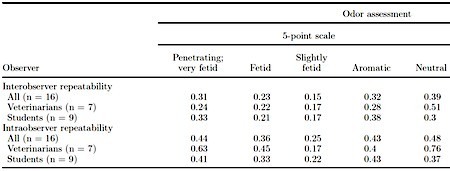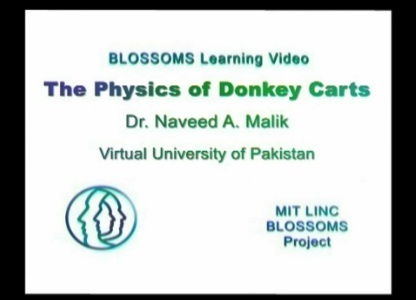Marc Abrahams's Blog, page 479
July 10, 2013
Swithers: “Counterintuitive… derangements” from diet soda
Everyone loves a counterintuitive scientific paper, unless they don’t like it. Here’s a new counterintuitive scientific paper:
“Artificial sweeteners produce the counterintuitive effect of inducing metabolic derangements,” Susan E. Swithers [pictured here], Trends in Endocrinology and Metabolism, epub 2013. The author, at Purdue University, explains:
“The negative impact of consuming sugar-sweetened beverages on weight and other health outcomes has been increasingly recognized; therefore, many people have turned to high-intensity sweeteners like aspartame, sucralose, and saccharin as a way to reduce the risk of these consequences. However, accumulating evidence suggests that frequent consumers of these sugar substitutes may also be at increased risk of excessive weight gain, metabolic syndrome, type 2 diabetes, and cardiovascular disease. This paper discusses these findings and considers the hypothesis that consuming sweet-tasting but noncaloric or reduced-calorie food and beverages interferes with learned responses that normally contribute to glucose and energy homeostasis. Because of this interference, frequent consumption of high-intensity sweeteners may have the counterintuitive effect of inducing metabolic derangements.”
(Thanks to investigator Jessica Girard for bringing this to our attention.)

Technical note: Evaluation of odor from…
Today’s Technical Note of the Day is:
“Technical note: Evaluation of odor from vaginal discharge of cows in the first 10 days after calving by olfactory cognition and an electronic device,” I. Sannmann, O. Burfeind, V. Suthar, A. Bos, M. Bruins, W. Heuwieser , Journal of Dairy Science, epub June 28, 2013. The authors are at Freie Universität Berlin, Germany and at C-it, in Zutphen, the Netherlands.
Here is detail from the study:
(Thanks to investigator Neil Martin for bringing this to our attention.)
BONUS (unrelated research at Freie Universität Berlin): “Signs of Doping or of Having Eaten Steak?“


Showcasing the Venturi Didgeridoo (new patent)
Dr. Charles Adams Eaton, who is an instructor at the University of New Mexico, has invented the “Venturi Didgeridoo” (or “Reverse Didgeridoo”) for which a US patent 8,466,361 was granted June 18, 2013. The new didgeridoo not only manages to produce much lower tones than would normally be expected for its length, it also converts into a walking stick and a monopod camera support. Here is Dr. Eaton demonstrating the instrument and explaining how it works:
ALSO SEE : Didgerdoo players’ glottic activity – the lowdown


July 9, 2013
The 2013 Imperial College Ig Nobel show [recording]
IC Radio has a recording of the Ig Nobel show we did at Imperial College London this past March (it was the 8th annual show we’ve done there in conjunction with the UK’s National Science Week). IC radio describes it this way:
Recorded at the Imperial College tour show, speakers include Marc Abrahams, Ian Day and Santi Rodriguez, Ray Goldstein, James Harkin, Volker Sommers, Richard Stephens and a McGonagall recital by Andrew J.T. George.
Topics inlclude why the wrong million people use deodrant, hairology and why eating ants helps you understand chimps.
BONUS: @Liveskeptic storified that big Ig Nobel show at Imperial College London.


The physics of donkey carts
A video about the physics of donkey carts:
The video is narrated by Professor Dr. Naveed A. Malik. Professor Malik also narrated an Urdu version of the video.
(Thanks to Beth McMurtrie for bringing this to our attention.)


Another reason psychology is difficult to do well
Ig Nobel Prize winner Dan Simons and colleagues point out one of the things that makes psychology so difficult to do well. Ed Yong writes about that, in his (Yong’s) blog:
For decades, we’ve known that our expectations can wield a huge influence over our behaviour and our bodies. This is why new medicines are tested in double-blind randomised trials, where neither doctors nor patients know who’s getting a drug and who’s just getting a placebo….
Running double-blind studies is easy enough when your medicine looks the same as a saline drip, but it’s usually impossible in psychology. “Psychology interventions aren’t like pills,” says Simons. “If you’re receiving an experimental treatment for depression, you know that you’re receiving treatment.” …
That’s the problem: It’s hard to run these interventions without revealing your hand to volunteers. The even bigger problem, according to Boot and Simons, is that psychologists have largely dealt with this issue by sweeping it under the rug…. Now, together with colleagues Cary Stothart and Cassie Stutts, Walter Boot and Simons have published a paper—more a manifesto, really—that outlines their gripes. (You can read the full details of their project here, including an FAQ and a blog post.).…
BACKGROUND: Dan Simons and Chris Chabris were awarded the 2004 Ig Nobel Prize for psychology, for demonstrating that when people pay close attention to something, it’s all too easy to overlook anything else — even a woman in a gorilla suit. [REFERENCE: "Gorillas in Our Midst," Daniel J. Simons and Christopher F. Chabris, vol. 28,Perception, 1999, pages 1059-74.] Here’s video of that experiment:


July 8, 2013
New-fangled Orodispersible Tablets
News about new-fangled orodispersible tablets:
“Orodispersible Tablets: New-fangled Drug Delivery System – A Review,” S. A. Sreenivas, P. M. Dandagi, A. P. Gadad, A. M. Godbole, S. P. Hiremath, V.S.Mastiholimath and S. T. Bhagawati, Indian Journal of Pharmaceutical Education and Research, 39(4) Oct – Dec. 2005, pp. 177 f. The authors, at K. L. E. S’s College of Pharmacy, Hubli, and, K. L. E. S’s College of Pharmacy, Belgaum, India, explain:
“The ultimate aim is to provide the tablet that quickly disintegrates or dissolves upon contact with saliva and also provides a good mouth feel.”

How science is done: The case of the bear and the purse
A July 4, 2013 report in the Manchester [New Hampshire] Union-Leader illustrates how to begin a scientific investigation. The report begins:
Epping woman suspects a bear stole her purse
By JASON SCHREIBER, Union Leader Correspondent
EPPING — Isobel Parke has no proof, but she has a hunch that a purse-snatching black bear may be on the loose in her neighborhood.
Several bear sightings have been reported in town in recent weeks, including in the area of the 699 blueberry bushes at her farm on Blake Road. When her purse turned up missing Sunday night after she accidentally left it sitting on the steps in front of the door at her house, Parke began to suspect that a bear may be to blame.
She was so convinced, that she reported her suspicion to police this week. “I have no proof that a bear took it, but there’s no other explanation that I can think of,” Parke said.…
Parke is following in at least the first of the footsteps described by Sherlock Holmes: “How often have I said to you that when you have eliminated the impossible, whatever remains, however improbable, must be the truth?”
(Thanks to investigator Adam Olson for bringing this to our attention.)
BONUS: More about investigating bears

Purple (chocolate) is the new brown (chocolate) ?
As our informed readerbase will be aware, in 2004 the chocolate manufacturer Cadbury UK applied for an unusual ‘trademark’. It was unusual in that it had absolutely no distinguishing features other than its colour. The ‘trademark’ [shown above] would (eventually) allow the firm sole-use a specific shade of purple for packaging chocolate bars. [see notes below]
But a new purple chocolate twist has just emerged. The Swiss-based chocolate makers and wholesale suppliers Barry-Callebaut have now been granted (June 11th, 2013) a US purple chocolate patent – this time not for the packaging, but for the chocolate itself. ‘Process for making red or purple cocoa material’. Although it may have lain largely unnoticed until now, “There is” says the patent document “a desire amongst some consumers for cocoa products that have a different colour” and it goes on to describe, in some detail, how this might be achieved – without the use of food dyes. Improbable will of course attempt to keep readers informed of purple chocolate developments.
NOTES:
[1] After a number of appeals by rival chocolate maker Nestlé, the purple trademark case ended up in the High Court, see: Société des Produits Nestlé S.A. v. Cadbury UK Limited
[2]  The trademark very specifically only applies to a tightly-specified shade of purple known as Pantone ® 2685C. Oddly, perhaps even crucially, none of the official documents we have seen specify how close to (or how far away from) that colour chocolate manufacturers must remain. Indeed, Cadbury’s own website livery is substantially distant from the colour [see swatch, right]. And the online official application document is considerably bluer [see the large screengrab at the top of the page].
The trademark very specifically only applies to a tightly-specified shade of purple known as Pantone ® 2685C. Oddly, perhaps even crucially, none of the official documents we have seen specify how close to (or how far away from) that colour chocolate manufacturers must remain. Indeed, Cadbury’s own website livery is substantially distant from the colour [see swatch, right]. And the online official application document is considerably bluer [see the large screengrab at the top of the page].
[3] Since the high court case, the trademark now specifically excludes chocolate buttons.
BONUSES: For chocolate lovers, Freudians, and Freudian chocolate lovers.
A selection of Cadbury’s Flake TV ads (in b & w, no purple)

July 6, 2013
Shy scientists: Fearing
This week’s episode of “Are Scientists The Shy Creatures of Legend?” offers a music video: “Fearing“, by Joseph LeDoux and The Amygdaloids.
As will all episodes of “Are Scientists The Shy Creatures of Legend?“, the question posed to you is: Are these scientists shy?
(Thanks to investigator Sergei Yellen for bringing this to our attention.)

Marc Abrahams's Blog
- Marc Abrahams's profile
- 14 followers






